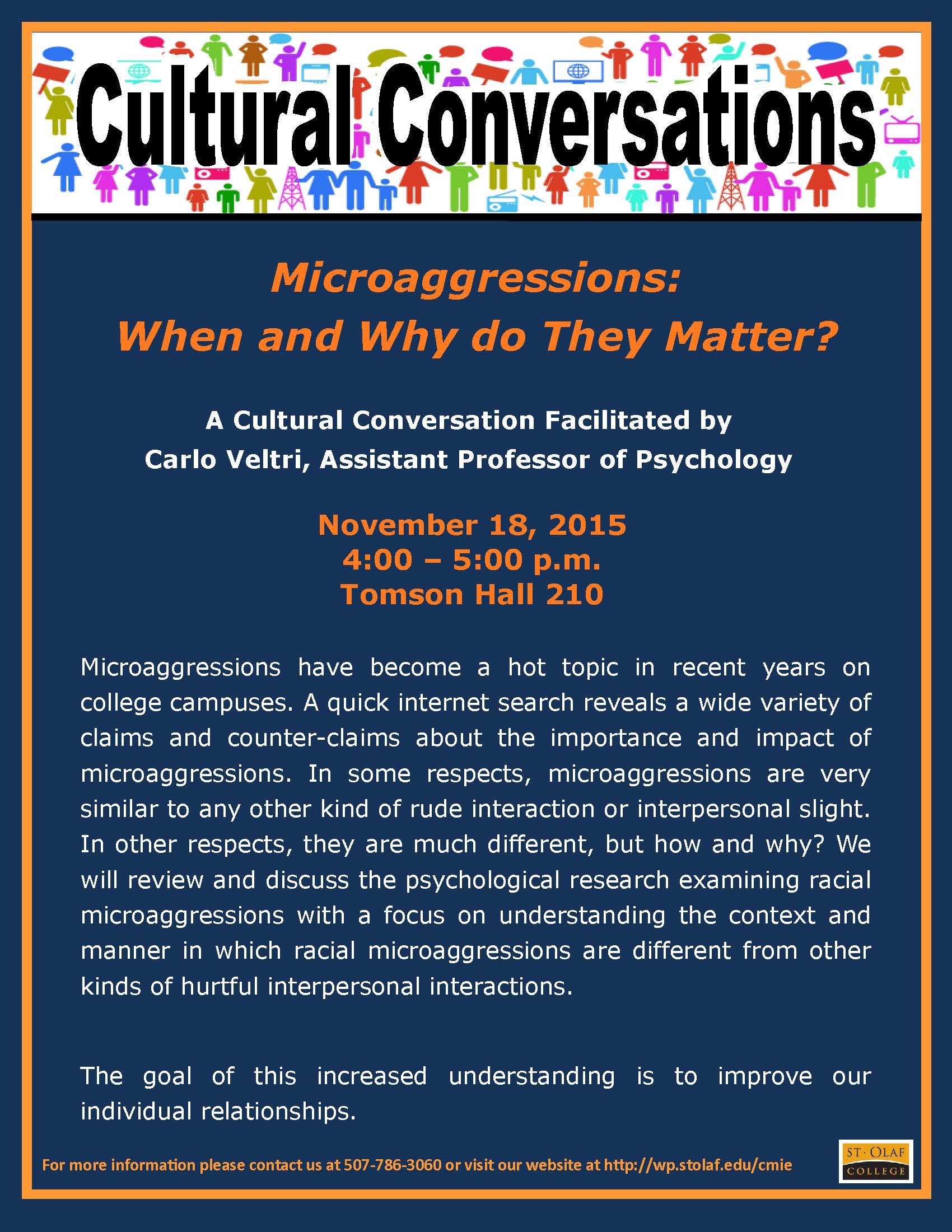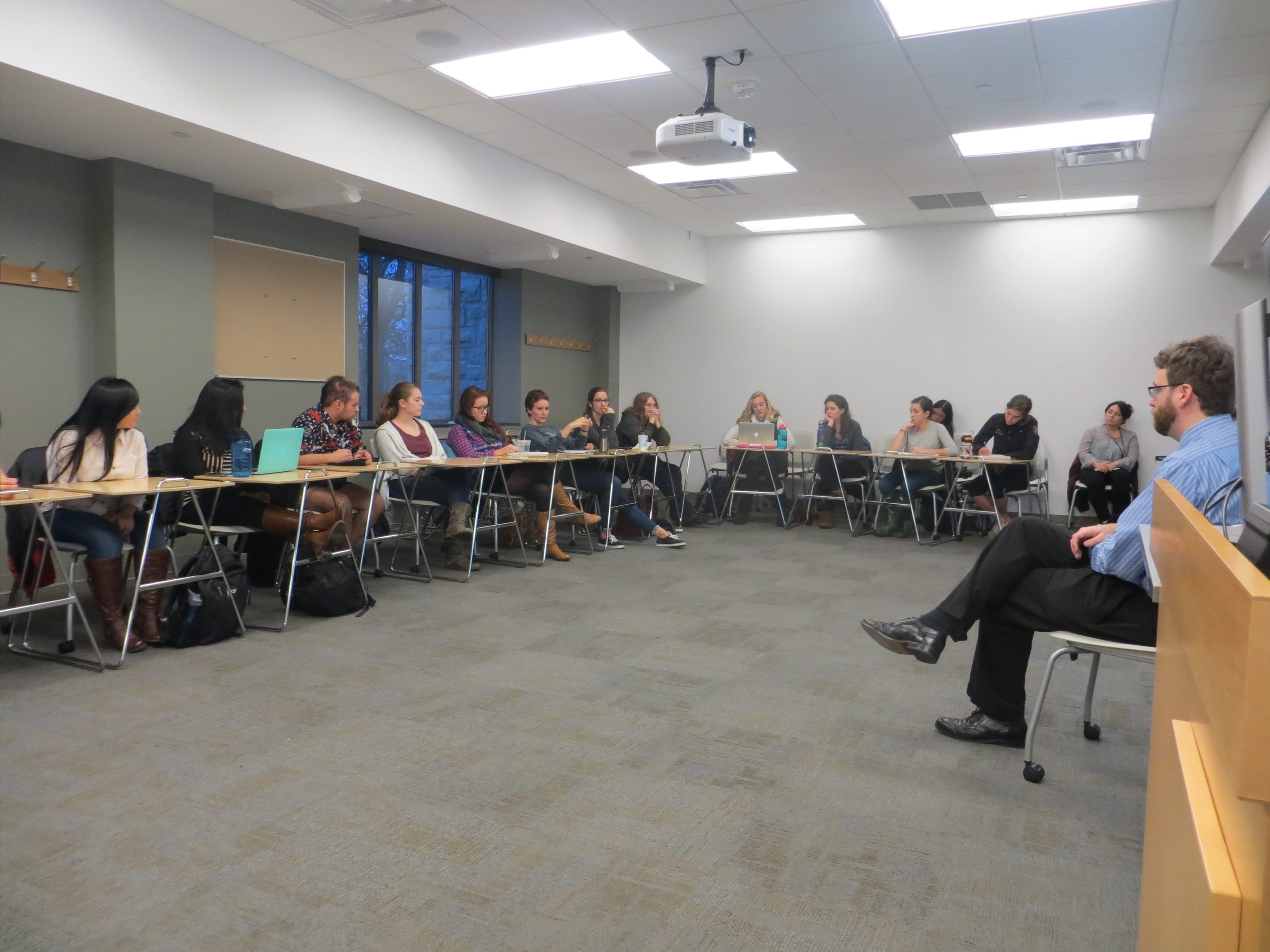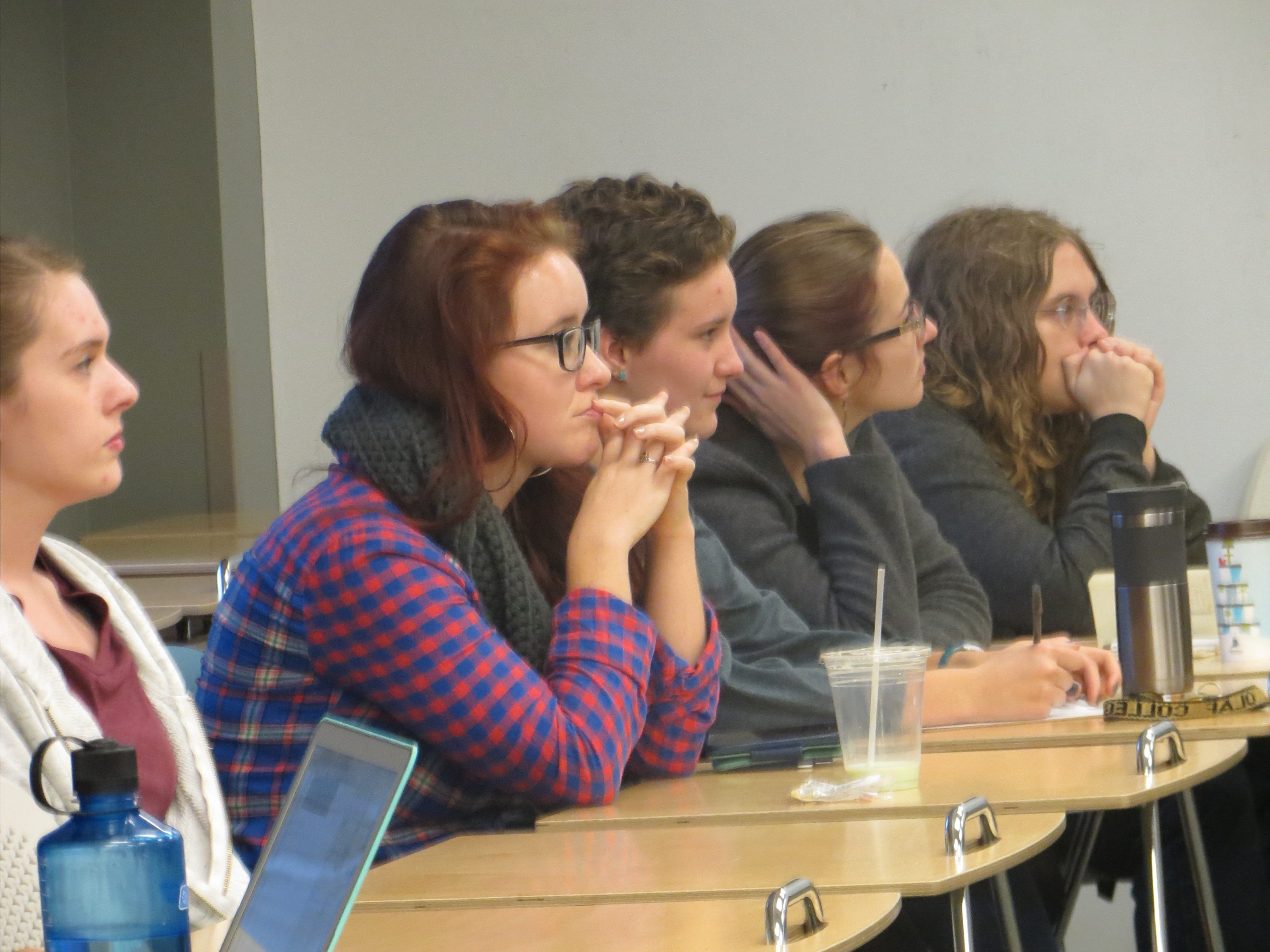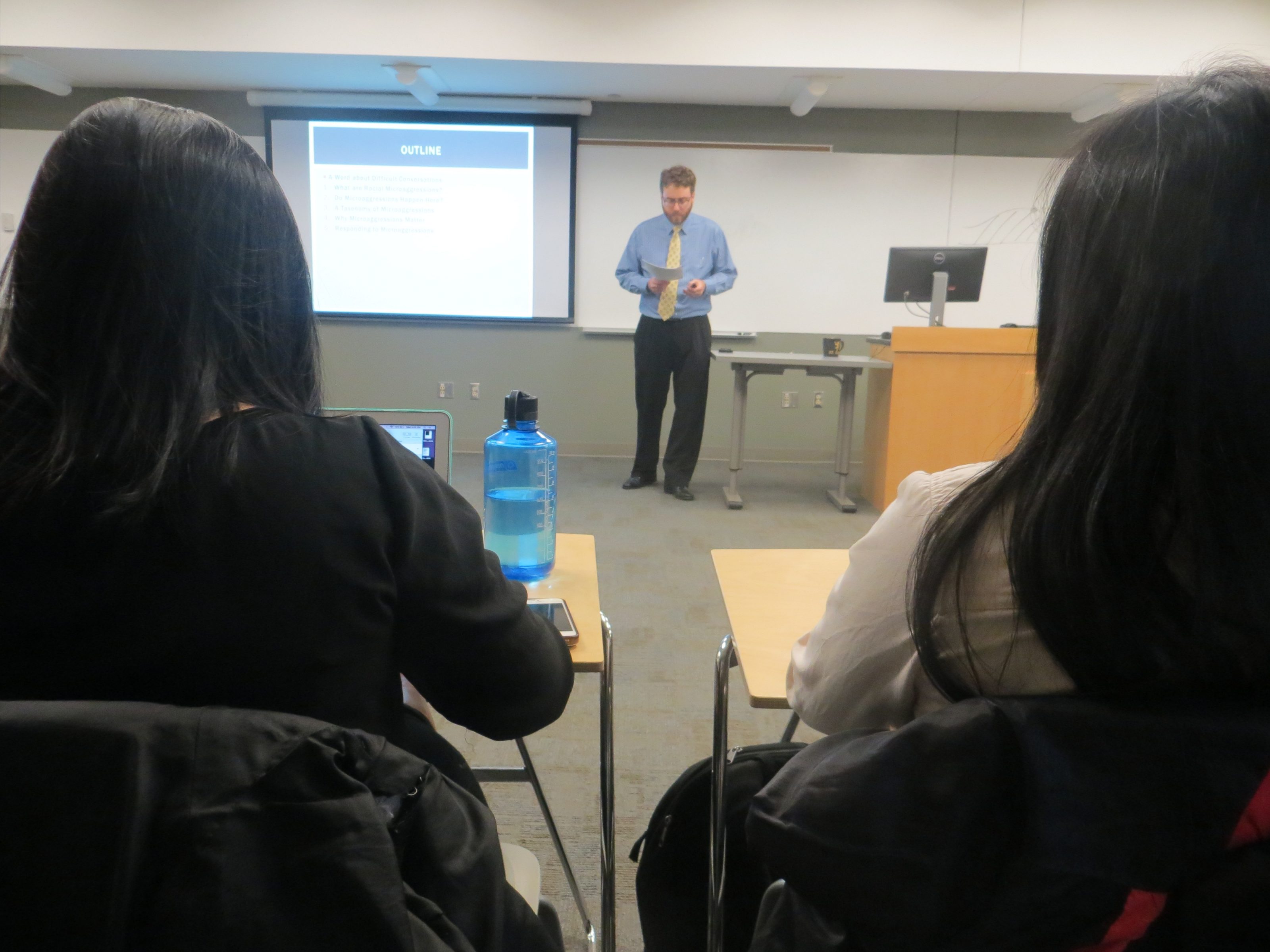On November 18 the Center for Multicultural and International Engagement (CMIE) hosted a Cultural Conversation, titled “Microaggressions: When and Why do They Matter?”. This conversation was facilitated by Carlo Veltri, Assistant Professor of Psychology. Professor Veltri discussed about racism today and presented a power-point that included the definition of microaggressions; he explained microaggressions that occur at St. Olaf, and an overview of theoretical framework for understanding microaggressions. Professor Veltri began his presentation by stating how racism still occurs today. That old fashioned racism is less common today and under disguise racism is what most marginalized people experience today. He gave a few examples that described under disguise racism like, a snoopy picture where the only black kid in the picture was sitting on the other side of the dinner table, alone, and appeared to be lower than the other white kids that were on the other side.
Professor Veltri defined microaggressions as everyday verbal or nonverbal insults, intentional or unintentional that communicate hostile derogatory negative messages to people based solely upon their marginalized group. He gave examples of microaggressions that occur at St. Olaf college when people make comments such as, “it must be nice to go to college for free”or “oh, so you’re a terrorist”, to minorities or people of color. Veltri also explained in detail the different categories of microaggressions, such as micro assaults, micro insults, micro invalidation. He then discusses about the psychological dilemmas that people go through when dealing with microaggressions. For instance, the person who experiences a micro aggression incident first decides if t was a racial aggression or not. The person will ask themselves why did this happen if it’ll happen again. This can have a negative emotional toll. Next, the affected person has to respond to the incident by either talking to other people of color or minorities or getting verification from them that they in fact did experience a microaggression. The person who experienced the microaggression can then have feelings of hopelessness, feeling visible, or undervalued, and perhaps that they cannot be authentic.
During discussion, a lot of students shared some stories where they felt like they experienced microaggressions. Students talked about how minorities or people of color are always faced with a catch 22 response. It is often challenging to express feelings about microaggression or racist incidents without having to fear the chance of being dismissed or told that “you’re using the race card”. While there was no actual answer of how to respond to microaggressions the group came up with a couple of ideas. One, it is important to understand the psychological dilemmas and domains of operation which can help normalize what can be a difficult experience (Veltri). Lastly, a student mentioned how she questions racially charged statements in order to get the other person making the statement thinking.



